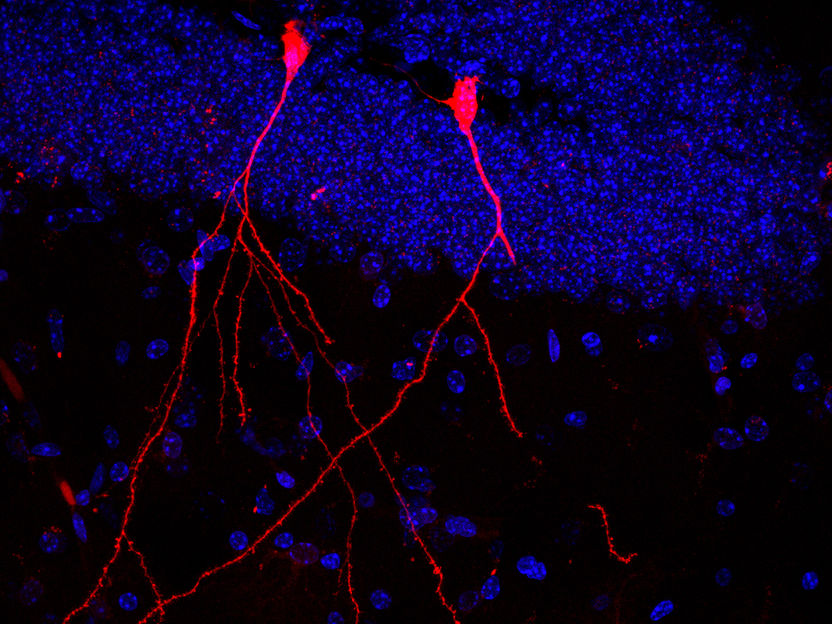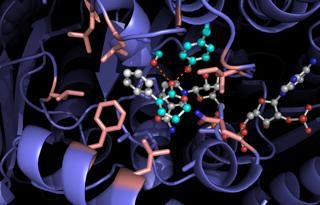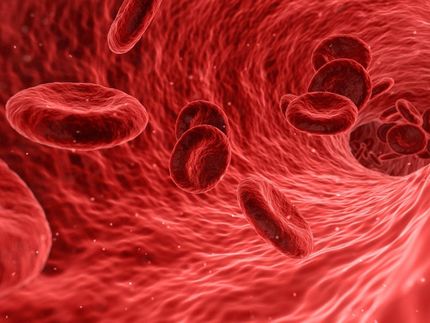How the body uses fat to fight infection
“Fighting infection takes a lot of energy and fat stores are huge energy deposits, which provide the fuel for the blood stem cells to power up the immune response”
New research from the University of East Anglia and Quadram Institute reveals how our immune cells use the body’s fat stores to fight infection. The research, published in the journal Nature Communications, could help develop new approaches to treating people with bacterial infections. The research team say their work could one day help treat infections in vulnerable and older people.
The team studied Salmonella - a bacterial infection which causes diarrhoea, vomiting, abdominal pain, fever and sepsis. The UEA team collaborated with the Quadram Institute and colleagues at the Earlham Institute, to track fatty acid movement and consumption in live stem cells. They went on to analyse the immune response to Salmonella bacterial infection, by analysing liver damage. They uncovered how blood stem cells respond to infection, by acquiring high energy fatty acids from the body’s fat stores.
The team found that in the bone marrow where blood stem cells are resident, infection signals drive adipocytes to release their fat stores as fatty acids into the blood. And they identified that these high energy fatty acids are then taken up by blood stem cells, effectively feeding the stem cells and enabling them to make millions of Salmonella-fighting white blood cells. The researchers also identified the mechanism by which the fatty acids are transferred and discusses the potential impact this new knowledge could have on future treatment of infection.
Dr Stuart Rushworth, from UEA’s Norwich Medical School, said: “Our results provide insight into how the blood and immune system is able to respond to infection."
“Fighting infection takes a lot of energy and fat stores are huge energy deposits, which provide the fuel for the blood stem cells to power up the immune response.”
“Working out the mechanism through which this ‘fuel boost’ works gives us new ideas on how to strengthen the bodies fight against infection in the future.”
Dr Naiara Beraza, from the Quadram institute, said: “Our results allow us to understand how our immune system uses fat to fuel the response to infection. Defining these mechanisms will enable us to develop new therapeutics to treat infections in the liver.”
Dr Rushworth said: “In the future, I hope our findings will help improve treatment for vulnerable and older people with infections, by strengthening their immune response."
“With antibiotic resistance being such a present and widespread challenge for society, there is an urgent need to explore novel ways like this to help the body’s immune system to fight infection,” he added.
Most read news
Topics
Organizations
Other news from the department science

Get the life science industry in your inbox
By submitting this form you agree that LUMITOS AG will send you the newsletter(s) selected above by email. Your data will not be passed on to third parties. Your data will be stored and processed in accordance with our data protection regulations. LUMITOS may contact you by email for the purpose of advertising or market and opinion surveys. You can revoke your consent at any time without giving reasons to LUMITOS AG, Ernst-Augustin-Str. 2, 12489 Berlin, Germany or by e-mail at revoke@lumitos.com with effect for the future. In addition, each email contains a link to unsubscribe from the corresponding newsletter.
Most read news
More news from our other portals
Last viewed contents

Breakthrough Discovery Sheds Light on Heart and Muscle Health - Scientists shoot first true-to-life 3D image of the thick filament of mammalian heart muscle
Christiaan De Wilde succeeds Frank Morich as Innogenetics' CEO

By capsule through the bloodstream - How intestinal bacteria communicate with the body

Canine Diag’noses’ - Dogs can detect SARS-CoV-2 infected humans on all tested body fluids with high accuracy

Light powers new chemistry for old enzymes

ACHEMA 2018: Preparations moving into high gear























































